
U3A Remuera | Auckland, New Zealand
Laugh, learn, love
James grew up in the 1960s and 1970s, when a large, extensive electric trolleybus system served Auckland. These vehicles fascinated him as a child, and thus began a passion for electric street transport.
At age 15, he joined the Tramway Division at MOTAT and has now been an active volunteer member of the tramway for 49 years. He’s been a tram conductor, managed MOTAT’s tram system for many years, and even wrote the guide used to train all MOTAT tram drivers. Most of his working life was spent in retail, but in 2011, he was asked to manage the operation of the new tramway down in Wynyard Quarter. Today, together with this role, and a full-time position at MOTAT looking after the infrastructure for the MOTAT Tramway, he says he is now like a pig in mud!
This is the 1st of three talks on the story behind the arrival of electric trams in Auckland – the trials, tribulations, tragedies, battles, and successes of bringing what was then “space-age” technology to NZ’s largest city. The story is brought to life with a large number of digital images, many rare and not seen previously of this revolutionary form of street transport – this large vehicle that could propel itself along as if by magic, without horses or a steam engine in front!”
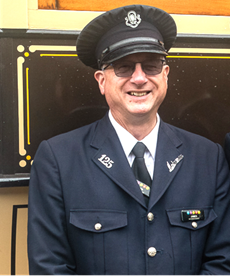
Troy will outline a few of the fish-hooks inherent in becoming a retirement village resident.
Troy Churton was the National Manager for Retirement Villages at the Commission for Financial Capability between 2014 to the end of 2020. During that time, he advised to Ministerial level, led stakeholder forums and collaborations, producing improved information resources for consumers, implemented Code variation changes and designed a nation-wide community education programme, partnering with the RVA and reaching thousands of intending residents. He brought intel from those diverse activities to light in a policy white paper.
Since then, he has retained independent consulting services to consumer groups and is regularly asked to facilitate in retirement village complaint situations. He retains Commissioner certification for Resource Management matters, holds governance roles on the Orakei Local Board and the Auckland Marine Rescue Centre Trust, and has an executive position with the Financial Services Council of New Zealand.
Troy has recently been re-elected to the Orakei Local Board.
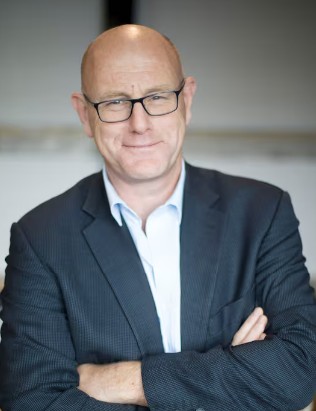
Michael Littlewood is a retired lawyer, employee benefit consultant, director and academic. He worked in New Zealand, Vanuatu and the United Kingdom. Michael has written extensively about public policy issues associated with saving, retirement and pensions, including a book How to create a competitive market in pensions – the international lessons (Institute of Economic Affairs, London, 1998). He maintains an interest in those issues.
He had a ‘Who do you think you are?’ moment in 2010 when he first saw a photo of his great-great-great-grandmother, Tiraha Cook. That prompted him to write William and Tiraha’s story.
Paihia, 1823, and William Cook is injured and abandoned by his whaling ship. He is nursed at the Mission by Tiraha, whāngai daughter of the great chief Nene.
Fifty years later, this couple’s grandson meets his grandparents for the first time and hears the story of their long life together.
Abraham senses long-buried secrets as his grandfather tells how, abandoned once again, this time with a young family in the isolated deep south, he and Tiraha drew on the knowledge and skills of both their cultures to survive, and to escape.
Pioneer shipbuilders on remote Stewart Island, and making ingenious use of scarce resources, William and Tiraha eventually cross the Tasman with their growing family to deliver a new-built vessel for the Weller brothers. They return, finally, to the Bay of Islands to witness the coming of British law, the signing of the Treaty of Waitangi, and the Flagstaff Wars. Despite the tensions from their own divided loyalties in these turbulent times, William and Tiraha grow to understand each other and the new country they are helping to shape.
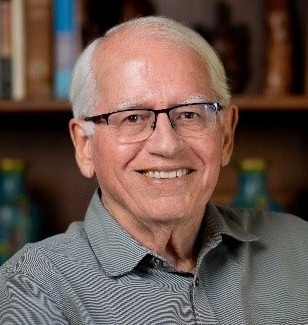
Michele Leggott is a poet and editor with a consuming interest in archives and the poetics of memory. She has published 11 collections of poetry and was the New Zealand Poet Laureate 2007–9. Her archival work spans anthologies, critical editions and web projects that address New Zealand and Modernist American poetry. She received the Prime Minister’s Award for Literary Achievement in Poetry in 2013. In 2017 she was elected a fellow of the Royal Society of New Zealand. Her most recent books are Face to the Sky (Auckland University Press, 2023) and Groundwork: The Art and Writing of Emily Cumming Harris (Te Papa Press, 2025) with co-author Catherine Field-Dodgson.
Michele’s talk is entitled “The Way Back: Two kinds of writing that helped save my life.” Face to the Sky, my poetry book, and Groundwork are the two faces of the writing that saved my life emotionally and intellectually as the Malaghan scientists transformed my immune system so that it could find and destroy the cancer and give me a shot at a second life.
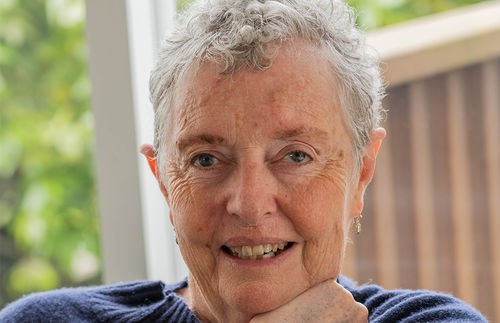
Wendy has more than 30 years’ experience as a lawyer primarily working in property matters including Residential and Commercial Conveyancing, Wills, Estates, Trusts, and Relationship Property Matters. Over the years Wendy has gained extensive knowledge and experience in Estate Administration.
In her experience Wendy has found that one of the reasons it can take longer to finalise an estate is the time it takes for family to find the information needed about the deceased. If all the information was at the Executors’ fingertips from the start the estate administration process would be far smoother and much less distressing for grieving loved ones left behind.
Wendy’s talk will explain why you need to create a comprehensive record of your details and what information you should record.
To assist her clients with their estate planning Wendy created The Estate Planner Book which is an easy-to-follow record book which enables all the important information to be kept in one place. She recently had the book published and made available to the public.
Professor J R Rowland is the inaugural Pro Vice-Chancellor Global and Graduate Research at the University of Auckland, a role that oversees all doctoral research students and the University’s global research engagement strategy.
Higher education in the developed world has reached a pivot point, sharpened by the pandemic, demographic changes, the digital revolution, and heightened global tensions. Decades of expansion on the back of the knowledge economy, social commitment to equality of opportunity, and the educational export industry, are giving way to leaner times. In this talk, Professor Rowland will place the New Zealand university sector in a global and domestic context and explore the notion of the fourth-generation university, an emerging concept in higher education. She will explain why, despite the shifts in public support and outright attacks on autonomy in some jurisdictions, universities are critical to the function of a healthy, free society, and must be supported to deliver high quality education and frontier research without undue interference.

Kerry Gibson is a Professor of Psychology and clinical psychologist based at the University of Auckland. She leads The Mirror Project which highlights the lived experience of young people experiencing mental health distress and identifies their own priorities for mental health support.
We try to understand why mental health problems amongst young people have increased so rapidly in recent times. While there is considerable debate amongst adults parents and professionals about the ‘crisis’ in youth mental health, young people themselves are seldom included in these conversations. Drawing from my research with young people around New Zealand, I will talk about the big issues affecting young people’s mental health and share some ideas about how to tackle this issue.
Kerry is the author of numerous research articles on youth mental health, including the book: What Young People Want from Mental Health Services: A Youth Informed Approach for the Digital Age published by Routledge in 2022. Kerry is a fellow and former president of the New Zealand Psychological Society and currently serves on the Youthline Trust Board.
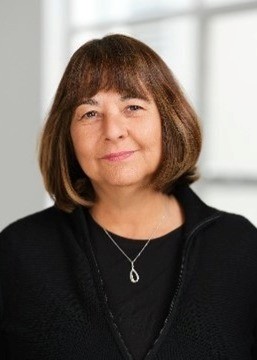
Marama Royal MNZM, JP has been a Director of Ngati Whatua Orakei Trust since 2010 and served as Chair since December 2O17. The Ngāti Whātua Ōrākei Trust is the governing entity, whose purpose is to receive, administer and protect the Trust’s assets to ensure the cultural, social and commercial development of Ngāti Whātua Ōrākei for the benefit of its members.
Mārama holds several directorships and chair roles across Tamaki and Aotearoa and has recently been appointed as Pro Chancellor at AUT. In addition, her current voluntary roles within the community include serving as a Justice of the Peace and as an Independent Marriage Celebrant.
Her fields of expertise include extensive experience in strategic planning, relationship management, leadership, governance, and organisational change. For Ngāti Whātua Ōrākei, as the tangata whenua of Central Tāmaki, climate change and sustainability of our environment are top priorities. The protection and restoration of our whenua and moana are key to the future. Marama is passionate about achieving positive outcomes for whānau, especially our kaumatua and is a servant of her people.
Hapaitia te ara tika pumau ai te rangatiratanga mo nga uri whakatipu: Foster the pathway of knowledge to strength, independence and growth for future generations, especially the tamariki and mokopuna, our leaders of tomorrow

John Montgomery is emeritus professor at the Institute of Marine Science at the University of Auckland. “Approaches to Auckland” is the classic Hauraki Gulf chart. We can use this chart as a metaphor to highlight the importance of our harbours and surrounding ocean to Auckland’s identity. Through images and background stories he will discuss Auckland’s place in the oceans. Where we came from geologically, the pulse of the gulf as it now is, and how we might chart a sustainable future. People are very concerned about the Hauraki Golf at present and marine reserves. Professor Montgomery has done a lot of good research on marine topics including fish and neuroscience.


The Hundertwasser Art Centre with Wairau Māori Art Gallery celebrates painter, architect, ecologist and visionary Friedensreich Hundertwasser and contemporary Māori artists. The Austrian New Zealand artist Hundertwasser, who lived in New Zealand from 1973 to 2000, was first and foremost a painter but became involved in architecture and environmental activism because of his concerns about the exploitation of natural resources and ruthless urbanisation. The design of the Hundertwasser Art Centre with Wairau Māori Art Gallery was based on initial sketches by Hundertwasser himself thirty years ago. In this presentation, Dr Joost de Bruin, Director of the Hundertwasser Art Centre, will reflect on Hundertwasser’s legacy and how it is represented in the Hundertwasser Art Centre with Wairau Māori Art Gallery. He will discuss Hundertwasser’s vision of the ‘Five Skins’ that articulates how we are all defined by our bodies, our clothes, our homes, our identity and the earth on which we live.
Matthew Hooton will summarise the main findings of his recent PhD thesis (under examination) on principles of conservatism, drawn from ontology, epistemology, ethics, metaethics and political philosophy.
He will then apply them to the controversy over the taniwha Horotiu in 2011, at which time he was an advisor to the Independent Māori Statutory Board, and consider how they may have assisted the board and Prime Minister John Key manage the issue differently

Peter Lineham is Professor Emeritus of History from Massey University, where he taught for 40 years.
His talk is entitled “Judge William Martin of Judges Bay, the first Chief Justice of New Zealand and his friends”
Peter was awarded the MNZM in 2019 for his services to religious history and the community.
He is awaiting the publishing of a new book called “Weteriana Methodists”

Our speaker for October is Carmel Claridge. Carmel may already be known to some of you from her time as Deputy Chairman of the Orakei Local Board. Carmel has an eclectic background, working at various stages of her life as a lawyer, fitness consultant, cleaner, dog groomer, social housing navigator, and now Coordinator of Te Kōti o Timatanga Hou/Court of New Beginnings.
Carmel is passionate about her mahi at Te Kōti o Timatanga Hou and feels privileged to share the TKTH journey with some of our most disadvantaged and vulnerable members of society – the homeless.
Te Kōti o Timatanga Hou/Court of New Beginnings, is a therapeutic specialist Court set up in 2010 in response to concerns about recidivist, low-level, public nuisance offending in the Auckland CBD area. Evaluations of the Court have shown a significant reduction in arrests, nights spent in prison, and accident and emergency visits. Te Kōti o Timatanga Hou is a proven“circuit breaker” for many caught in the revolving door, between prison and the street. It offers guidance and hope to a better life path for those who have the courage to change.

Our September speaker will be Simon Mitchell, Professor and Head of Department of Anaesthesiology at the University of Auckland.
Simon works as an anaesthesiologist at Auckland City Hospital, a diving physician at North Shore Hospital (Auckland), and is Professor of Anaesthesiology at the University of Auckland. For the last 3 years he has been ranked by Expertscape.com as the world’s foremost expert in both decompression sickness and air embolism.
Simon has a long career in sport, scientific, commercial, and military diving. He was first to dive and identify three historic deep shipwrecks in Australia and New Zealand, including one in 2002 which was the deepest wreck dive undertaken worldwide at the time. He was conferred Fellowship of the Explorers’ Club of New York in 2006, and was the Rolex Diver of the Year in 2015.
Simon is going to give a talk about the rescue of the Thai school boys from the caves in the Tham Luang Forest Park in the far north of Thailand in July 2019.

The Honourable John Priestley attended Kings School & College and studied Law at the University of Auckland. John carried out postgraduate study at the University of Virginia and at Cambridge. His doctoral thesis was on “Matrimonial Property Systems.”
John commenced practising Law in 1968 and was appointed Queen’s Counsel in 1994 and to the High Court Bench in 2000. Among his many interests and involvement in tribunals was that of being Deputy Chairman of the Refugee Status Appeals Authority and Chairman of the Deportation Review Tribunal.
With the rising number of people fleeing their homes because of war, political upheavals, poverty famine & climate change. refugee numbers are rising. How we and many other countries cope with an influx of people seeking refuge is a problem for us all.
The title of his speech is “What is a refugee?”

Sir Richard FAULL KNZM, BMedSc, MB, ChB, PhD, DSc, FRSNZ
Sir Richard Faull is a Distinguished Professor and Director of the Centre for Brain Research at the University of Auckland.
During his 45 years at the University, he has established an international reputation for his research studies on the normal and diseased human brain (Alzheimer’s, Huntington’s, Parkinson’s and epilepsy) and with the generous support of families, has established an international leading Human Brain Bank to promote worldwide research on human brain diseases. His research group has revolutionised our knowledge of the human brain by showing that contrary to dogma, stem cells are still present in the adult human brain and have the potential to make new brain cells and repair the brain throughout life.
His conributions to research on the human brain have been recognized by his appointment as a Fellow of the Royal Society of New Zealand (1998) and he was awarded: the Liley Medal by the Health Research Council of New Zealand in 2005; New Zealand’s highest scientific award, the Rutherford Medal, in 2007 by the Royal Society of New Zealand for outstanding contributions in science; and, received the Supreme Award in the 2010 World Class New Zealand Awards.
In 2012 he was appointed Distinguished Professor at the University of Auckland and awarded a knighthood by the Queen in 2016 for his contributions to brain research.


Pete Morgan, who farms 265 hectares in the Waikato with his wife Ann, is one of a new generation of farmers who are passionate about spearheading a proactive and tech-friendly approach to the changing agricultural landscape. Nominated as an Agri Star by UBCO, Pete integrates GPS tracking, climate-modelling and data analysis with cutting edge “field tech” such as virtual fencing systems and electric utility bikes.
Pete envisions the future of farming anchored in sustainability and meeting the evolving demands of climate change and societal

Professor Thorne completed a PhD at the University of Auckland, followed by post-doctoral studies at the Kresge Hearing Research Institute, University of Michigan. He is a leading auditory neuroscientist with research interests focussed on mechanisms, diagnosis, and treatment of inner ear diseases and clinical and population health approaches to prevention and alleviation of hearing loss.
Professor Thorne’s work has been cited over 5000 times and he has held senior management positions at the University of Auckland, where he led the establishment of the Section of Audiology and the Master of Audiology degree programme. He is currently the Director of the Eisdell Moore Centre and co-lead of the Aotearoa Brain Project.
Professor Thorne also contributes substantially to the hearing-impaired community, serving as the President of the National Foundation for the Deaf and Hard of Hearing, and was one of the lead advocates for the establishment of Newborn Hearing Screening through Project Hearing Impairment and Early Detection and Intervention (HIEDI).
In 2009, he was made a Companion of the New Zealand Order of Merit (CNZM) for services to audiology and auditory neuroscience.

Our main speaker this month will be Sue Cooper from Remuera Heritage. She is going to speak of “The Great Maori Feast” at Remuera, 11th May, 1844. Here is a contemporary painting of this event by Joseph Jenner Merett 1816 – 1854. It seems such feasts were not unusual in those days. I am sure her talk will be fascinating.Out of interest I looked up the meaning of Remuera. This is what google has to say.The name Remu-wera comes from two words: remu meaning edge or hem and wera meaning burnt. It is said to relate to an incident when a visiting chieftainess was killed and put in an umu (oven), still in her piupiu (skirt).
Professor Melton’s subject will be Precision genetic engineering (CRISPR), one of the most important scientific breakthroughs of the 21st century so far. It has the potential to cure many serious diseases such as cystic fibrosis, Huntington’s disease, haemophilia. Cures for sickle cell disease and thalassaemia have already been developed.
Further, it is being used to breed crops and animals to deal with climate change (e.g. cows that fart less, produce more milk and cope with increasing temperatures).

Hamas’s brutal terrorist attack and Israel’s heavy military response are the latest episodes of a history of antagonism. This slideshow will sketch the causes and flare-ups prior to the current conflict, describe the current aims and tactics of the two sides, and assess the prospects for a stable Israeli-Palestinian coexistence.

Conflicts with Hezbollah, Houthis, and Iran, and relations with the Gulf emirates and the US, will be touched on.
Questions and comments will be welcome. For background reading the following link is recommended: https://www.thepost.co.nz/nz-news/350113942/israel-winning-militarily-losing-political-war
Our December speaker was Dr Mels Barton
An environmental scientist turned coordinator, campaigner, organiser, networker and environmental advocate, Mels works with community organisations and not-for-profits including the Kauri Rescue Trust and The Tree Council.She is Chair of both the Titirangi Residents & Ratepayers Association and the Combined Waitākere Ranges R&R Group and is a former Trustee of Ecomatters Environment Trust and the Weedfree Trust.

Mels currently works as the Project Coordinator for Kauri Rescue and was the National and Auckland Coordinator of NZAEE Seaweek from 2011 to 2019. She was a leading member of the Waitākere Rāhui campaign working to support Te Kawerau ā Maki and has been campaigning for better management and awareness of kauri dieback disease since it was discovered in Piha in 2006.
Mels has a degree in Geology and Physical Geography and PhD in estuarine sediment transport processes. In the UK she worked for Environment Agency Wales for 9 years, culminating as the Water Quality Consents Manager for Wales.
Since arriving in NZ she has mostly been self employed but did spend 5 years working for Te Atatu Labour MP and Minister Phil Twyford as his Issues Assistant.
Mels runs her own consultancy business Subliminal Ltd, which enables her to work on many environmental projects including Seaweek, and the citizen science initiatives Kauri Rescue and Marine Metre Squared.
Mels has lived in Titirangi, west Auckland for 24 years since emigrating from Wales in 1999 & in her spare time she enjoys hanging out with her horses and walking her dogs.
Mel related her journey to obtain the protection of the kauri forests in the Waitakeres and Hunuas. She told us about a phosphite which helps trees fight against the kauri dieback disease, which was very encouraging for the audience. She continues to advocate and support the ongoing fight for our native icon.

Michelle Brinsden, The Project Coordinator for the Eastern Bays Songbird Project, gave an intersting talk about protecting birds in the Eastern Bays. The project distributes rat and possum traps to residents so that they can trap in their own backyards. Protecting our biodiversity is essential. Michelle talked about what we can do to assist this project which has been very successful so far.
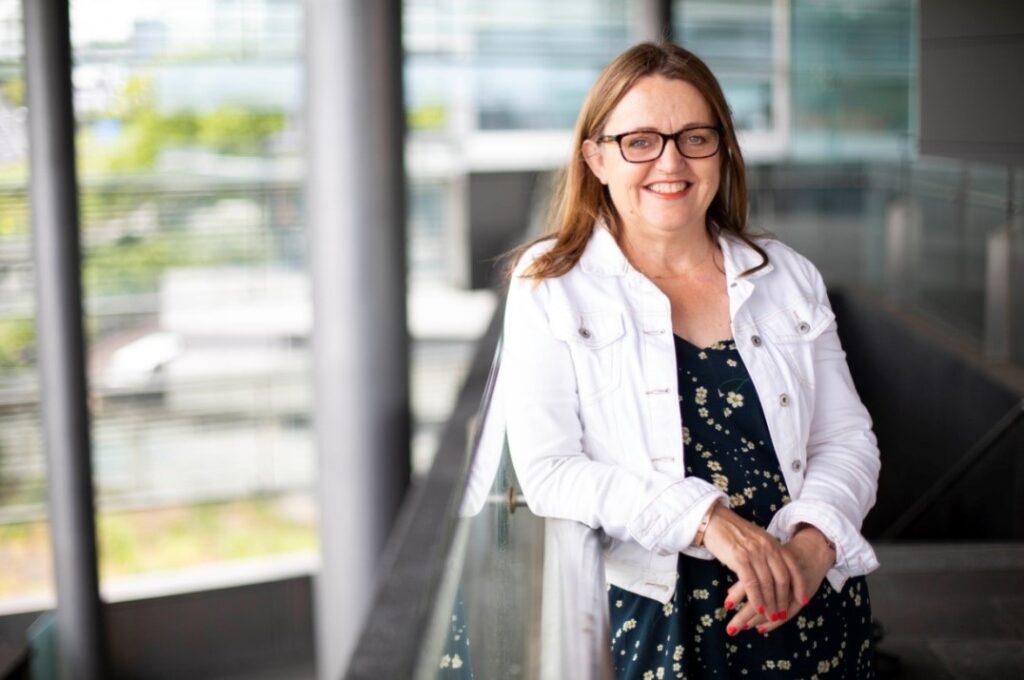
What does forced labour and migrant worker exploitation look like in New Zealand?
September 11th Speaker
Dr Christina Stringer is Associate Professor, Centre for Research on Modern Slavery, University of Auckland Business School.
Christina has been undertaking research into temporary migrant worker exploitation in New Zealand for over a decade. Her research began with colleagues investigating the use of forced labour on board foreign vessels fishing in New Zealand’s waters. This research led to a significant shift in government policy. She then undertook research into the exploitation of temporary migrant workers in New Zealand, firstly, for a coalition of NGOs and most recently for the Ministry of Business, Innovation and Employment (MBIE). Christina is a member of the Government’s Modern Slavery Leadership Advisory Group.
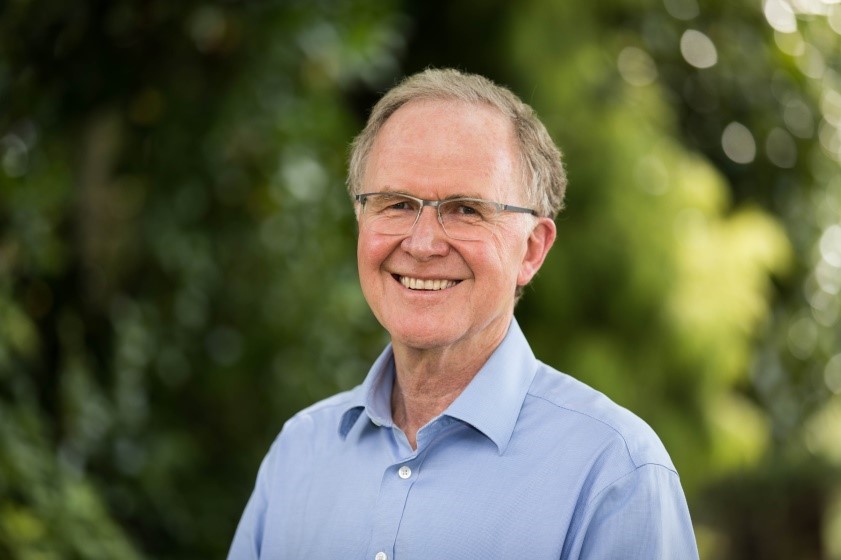
Complaints matter: lessons from a public watchdog
Our speaker for August.
Ron Paterson has been a law professor, author, Health and Disability Commissioner, Ombudsman and chair of major inquiries and reviews in New Zealand and Australia.
In this talk, Ron will share lessons from 20 years plus of handling complaints and reviewing complaint systems – about doctors, hospitals, rest homes, local councillors, bureaucrats, lawyers, banks and power companies.

Our speaker for June will be Professor Stephen Hoadley. You will remember he gave us a fascinating talk last year about the Ukraine, how it came to be and some of the politics associated with its formation.
On June 12th he will be speaking to us again, the topic this time being “An American Political Update”
Jenny Lynch is a former editor of the NZ Woman’s Weekly, where she began her career in journalism. She also worked on the Weekly News, Sunday Herald, Thursday magazine, and in Australia and Canada. Although principally a feature writer, she gained wide experience in other magazine roles. At various times she was a columnist, fashion writer, theatre critic and layout designer.
In 1976 she returned to the NZ Woman’s Weekly, where she became assistant editor the following year and editor in 1987. She led the magazine for seven years.
Jenny is also the author of four non-fiction books including a memoir, “Under The Covers: Secrets of a Magazine Editor” and “Ready To Wear: The Changing Shape of New Zealand Fashion.” Her latest work, a novel, was recently accepted for publication.
Jenny was educated at Epsom Girls’ Grammar and in the United States.
Her talk to U3A on the history of (mainly) 20th century fashion is titled “You Must Remember This…”
Alan is a retired civil engineer and project manager who joined the embryonic Auckland East Men’s Shed group in 2016. He is an enthusiast for the enhancement of wellbeing and mental health of the older generation. He has been a member of the Shed’s Board for the last 5 years and was elected Chair in 2022.
Alan gave an engaging talk to our Remuera U3A April meeting, complete with slides illustrating the work he has been involved in. This has included an interior refit of the building the Auckland Council made available to them for the Men’s shed, beside the Remuera golf course on Abbott’s Way
His primary contributions to the Shed have been
• Planning and supervision of the Buildings Improvement Programme
• Development of environmental pest traps manufacture
• Encouragement of a welcoming inclusive culture for members.
He had many interesting tales to tell about the growth to over 200 members over the time he has been involved, including more latterly, women joining.
Over a million good reasons…
“There are 6.5 million dairy cows in New Zealand, each producing on average 27 kilograms
of dung a day. By the time you add in another 3.6 million beef cattle and 27.4 million sheep
that is over 100,000,000 tonnes of dung each year.”
Launched in 2014, Dung Beetle Innovations owes its existence to the combined efforts of co-founders Dr Shaun Forgie and Andrew Barber. These two formed the Dung Beetle Release Strategy Group that campaigned since 2009 for the introduction of dung beetles to New Zealand. On behalf of the Group, Dr Forgie provided the science for the Environmental Protection Authority application to introduce exotic dung beetles to New Zealand.
The majority of the 6,000 species of dung beetles worldwide are tunnellers, with the remainder being either “ball-rollers” or “dwellers” that live within the dung piles. Tunnellers dig extensive burrows in the soil beneath the manure. They make large numbers of dung balls in these tunnels resulting the burial of most of the manure on the pasture surface which the adult beetles lay eggs in. All this buried manure is a rich source of nitrogen and other nutrients that are available for soil microbes, earthworms and plant roots when the new generations of dung beetles have emerged from them. All these tunnels and soil mixing vastly improves soil structure and with it improved infiltration of rain water rather than it running off into our waterways carrying with it the contaminants that lead to reduced water quality.
Dung Beetle Innovations is dedicated to rebalancing New Zealand’s pastoral farming systems – improving water quality and soil health – through the establishment of tunneling dung beetles as a sustainable farm management practice by introducing 11 exotic pastoral dung beetles to New Zealand. The objective is to provide NZ an innovative, environmentally beneficial, self sustainable means to clean up its livestock pastures, reduce surface runoff and improve soil health.